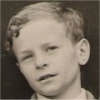 | Name: Philip
Overview: Philip was diagnosed aged 9 and considers that it`s better to get diabetes young, when the body is more adaptable. He attended a grammar school, and regrets that he often used diabetes as an excuse to miss school. He left at 16, but acquired more qualifications later and became a successful accountant. His diabetes was well controlled and caused little trouble for most of his life, until he began to get early morning hypos a few years ago. (He finds the term `hypo` unhelpful, since it`s used to refer to anything from a mild sensation to complete unconsciousness.)
Hits=4 |
|
| 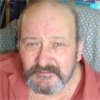 | Name: Victor Warman
Overview: Victor Warman`s father had been a Sick Birth Attendant in the Navy during the Second World War, and was very protective of his son after his diagnosis, advising him to avoid competitive sport. Victor left school at 15, spent much of his life as a machine-fitter, and ended up teaching Design Technology. His glucose levels go `up and down like a yoyo` and he now advocates plenty of exercise: `don`t do as I do, do as I say`. He has had several complications, but feels that diabetes is `not the be-all and the end-all of your life`.
Hits=3 |
|
| 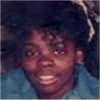 | Name: Barbara
Overview: Barbara was one of the last generations to qualify as a nurse without a university degree. After training at the Queen Elizabeth Hospital, Birmingham, from 1988-91, she was a staff nurse on general medical wards until 1996, when she began to specialise in diabetes at the University Hospital in Selly Oak, Birmingham. Since then, she has been called variously a Diabetes Nurse Educator, a Diabetes Specialist Nurse and a Clinical Nurse Specialist. Although she feels well-qualified by experience, she would like to take a degree. Another ambition is to provide more culturally-specific care for patients who share her Caribbean background.
Hits=3 |
|
| 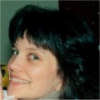 | Name: Julia
Overview: Julia was the first member of her family to go to university, and she taught in a primary school before specialising in teaching dance. Between her diagnosis in 1989 and the recording of this interview in 2004, she spent time in hospital for a variety of reasons, including the births of her three daughters. The biggest changes she noticed during these years were the increasing role of specialist nurses and also a shift to patient control: at first she was automatically put on a drip, whereas later the staff began to trust her to manage her own diabetes.
Hits=3 |
|
|
 | Name: Kevin Jones
Overview: Kevin Jones` father worked in a Welsh mine, then joined the Royal Navy and worked his way up from sick berth attendant to Lieutenant Commander. Kevin went to various grammar schools in Navy ports and left at 18 to train as an accountant. He worked for several large companies, unhindered by his diabetes, but has had more problems in recent years. In 2002 his leg was amputated, but he had great help from the Limb Centre and now walks and drives with an artificial limb. He loves jazz, and is pictured with a statuette of a jazz musician.
Hits=2 |
|
|  | Name: Joanne Pinfield
Overview: Joanne Pinfield was only 5 when she had the frightening experience of waking from a coma in hospital and she has found diabetes frightening for much of her life. At school she felt isolated by being the only person with diabetes. She left at 16 to work in a pottery with a sympathetic boss who helped her not to feel ashamed of diabetes, but then reverted to hiding her condition during 12 years working in a factory. Her father`s death in 2001 prompted her to take better care of herself. She married in 2002 and runs a limousine business with her husband.
There are also interviews with Joanne`s mother, Mary Potter, and husband, Nick Pinfield.
Hits=2 |
|
|
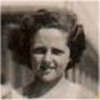 | Name: Ann
Overview: Ann came to England in 1945, and was diagnosed when the matron at her boarding school found her drinking the bath water. Her mother had worked as a nurse at Kings Hospital, London, and took her daughter there, to be treated by R.D. Lawrence (co-founder of the British Diabetes Association, now Diabetes UK). She has memories of being made to go into a hypo, of glass syringes, thick needles, and embarrassing urine tests. She worked as an occupational therapist, and brought up two children alone. Despite eyesight problems, she now makes a living as an artist.
Hits=2 |
|
| 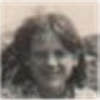 | Name: Mary
Overview: Mary`s father was a baker and her mother a factory worker. When she was diagnosed, the hospital suggested that they should buy a book on diabetes by R.D. Lawrence, but she doesn`t think they read it. She feels she was given very little information, and remembers thinking that her diabetes might disappear when she began to have periods at 15. She made little effort to control her diabetes until she went to a clinic in Oxford in 1983. She works as a podiatrist and reckons that about 75% of her patients have diabetes
Hits=2 |
|
|
 | Name: Kushira Hackett
Overview: Kushira Hackett`s mother was white and her father black – from Guyana. Her parents split up when she was 5 and her mother later married a Jamaican. After diagnosis, the hospital staff explained to her mother about portions and gave her scales for weighing food, but gave no explanations to Kushira. Her mother also gave no explanations, and she thinks this led to her rebellion against diabetes, and to her leaving home aged 16. She had a period of homelessness, but later gained a law degree and now lives happily in Birmingham with her partner and two children.
Hits=2 |
|
|  | Name: Ken McHardy
Overview: Dr. Ken McHardy was educated at Aberdeen Grammar School, which counts among its former pupils J.J.R. Macleod, the co-discoverer of insulin, and R.D. Lawrence, co-founder of the British Diabetic Association. Since 1993, he has been a consultant in diabetes and general medicine at Aberdeen Royal Infirmary, where he succeeded Michael Williams. He has been much involved in integrating primary and secondary diabetes care in the Grampian region and in providing professional education. He has taught for over 25 years in the Aberdeen University Medical School, and has worked in Postgraduate Medicine since 1993, becoming Associate Postgraduate Dean in 2002
Hits=2 |
|
|
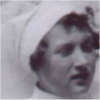 | Name: Monica Winn
Overview: Monica Winn was the only child of a naval officer and grand-daughter of a doctor who diagnosed her diabetes only 4 years after insulin was first manufactured in England. She nearly died of pneumonia; had bronchitis every winter; spent much time in bed and never attended school. Her parents were told she wouldn`t live beyond 14 and she was told that she wouldn`t have children. She had a daughter in 1945 and recorded this interview when she was nearly 86. She is very fit and copes well with slight memory loss after a series of mini-strokes.
Hits=2 |
|
| 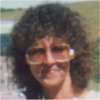 | Name: Mary Potter
Overview: Mary Potter`s daughter, Joanne, developed symptoms of diabetes in 1978, when she was five. Her GP refused to believe she had diabetes and Joanne nearly died. This traumatic beginning left a legacy of anxiety and anger. Mary noticed that another mother of a diabetic child was more laid-back than she was. She also noticed that when a niece was diagnosed around ten years later, there was much more specialist help and information available. Mary still sometimes accompanies Joanne to diabetic clinics. Joanne hates clinic visits because she feels that doctors treat her like a child and make her feel guilty.
There are also interviews with Mary Potter`s daughter, Joanne Pinfield, and with Joanne`s husband, Nick Pinfield.
Hits=2 |
|
|
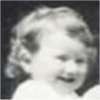 | Name: Joy
Overview: Joy was born seven years after her mother was diagnosed with Type 1 diabetes and from a young age took considerable responsibility for managing her mother`s care. Her aunt and two uncles also had diabetes, so Joy grew up thinking it was not unusual for people to test their urine, measure their carbohydrate intake and eat meals at precise times. She trained as a dietitian from 1967 to 1971 and has always specialised in diabetes. She has worked as a District Chief Dietitian in Surrey for over twenty years.
Hits=2 |
|
|  | Name: Shirley
Overview: Shirley left school at 16 and worked for the Inland Revenue until retirement. When she was diagnosed, her mother was very ashamed. Shirley looked after her parents until they died and then lived alone. She has had to cope alone with severe hypos, but says that living alone makes it easier to keep to a strict diet. She feels that her diet has made her healthier than she would have been if she hadn`t had diabetes. She has a low opinion of doctors, apart from a few consultants, but likes the group meetings held nowadays by specialist nurses.
Hits=2 |
|
|
 | Name: Leon Cowdery
Overview: When Leon Cowdery left school at 15, his diabetes barred him from his chosen profession of sign-writing because he was not allowed to go up a ladder. He worked as a cycle mechanic and then, in order to avoid going to his parents` Seventh-day Adventist church, he took up floor-laying at weekends. This led him into the building trade and he has been going up ladders ever since! He designed the house in which he lives and, now that he`s semi-retired, he helps his wife with gardening and maintains four motorbikes from the 1950s.
Hits=1 |
|
|  | Name: Gillian
Overview: Gillian was diagnosed when she was 23, while working as a
journalist in London. At the age of 26, a consultant advised her that if she
wanted children, it would be a good idea to have them soon, because "you`ve
got to consider whether you`re going to see them grow up". Her partner
didn`t want to be a father at that stage, so she decided to be a single
parent and has brought up two children on her own. Her daughter was
diagnosed with diabetes in 1999.
There is also an interview with Gillian`s son, Tom.
Hits=1 |
|
|
 | Name: Patrick Grogan
Overview: Patrick Grogan was treated at King`s College Hospital by R.D. Lawrence (co-founder of the British Diabetes Association, now Diabetes UK) and he remembers Lawrence commenting on the amount of carbohydrate at a hospital Christmas party. He has always kept to a healthy diet, has had lots of exercise as a machine-tool fitter and maintenance worker, and has had no diabetic complications. He`s a member of NHS Concern and the West Midlands Pensioners Convention and says that taking an interest in improving society is what keeps him going.
Hits=1 |
|
|  | Name: Jeanette
Overview: Jeanette left school at 15 and worked in one of the first supermarkets in Malvern, where she met her husband. They married when she was 17 and had two children. During her second pregnancy, she had high glucose levels, but it wasn`t until a year later that she was diagnosed with diabetes and admitted to hospital for 5 weeks. She continued to use a glass syringe until c.2002. She feels that diabetes has caused her few problems, but she had to give up work because of osteoarthritis at the age of 44.
Hits=1 |
|
|
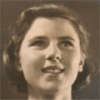 | Name: Margaret Williamson
Overview: Margaret Williamson was brought up in a village in North Yorkshire, the only daughter of an industrial chemist. Her mother was diagnosed with diabetes when Margaret was aged 2, and put on a diet of no carbohydrate with high quantities of insulin. When Margaret was diagnosed, a Newcastle consultant, James Spence, put mother and daughter on a more modern regime of high carbohydrate, which was weighed at each meal. After school, she went to business college in London, and worked as a secretary for directors of scientific institutions. She married a Cambridge research scientist and had two children.
Hits=1 |
|
| 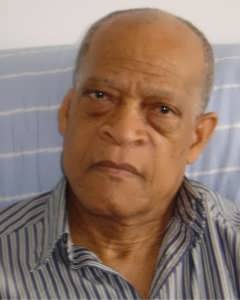 | Name: George Saunders
Overview: George Saunders was brought up in St.Kitts, worked for his father as a tailor, and came to England in 1958. Since recording this interview, he has received a lot of publicity, because his Birmingham workshop, where he worked as a tailor for nearly 30 years, has become part of a National Trust museum. After he was diagnosed, he was on tablets for about a year before changing to insulin. He is full of praise for medical staff, even though he ignores their advice when he thinks he knows best. He feels that his diabetes has caused him few problems.
Hits=1 |
|
|
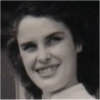 | Name: Grace
Overview: When Grace was diagnosed at the age of 15 her father was working for the Forestry Commission and they lived in a remote Suffolk wood. She was ill for months before diagnosis and thinks this was partly because they lived 4 miles from a GP and 20 miles from a hospital, and because her mother couldn`t face having another sick child after Grace`s sister died from leukaemia. Grace had early cataracts and was registered blind in her teens, but successful treatment throughout the rest of her life has meant that she has always had vision in at least one eye.
Hits=1 |
|
|  | Name: Shirley Jones
Overview: Shirley Jones` parents had little money to spend on food and she remembers eating bread and jam `many, many times`. She married at 19, divorced, married again at 21, and then her second husband left her to bring up two small children alone before she was diagnosed with diabetes, aged 32. She was recruited into the UK Prospective trial for Type 2 diabetes, but rapidly became insulin-dependent. Until recently, she ran a pub with her current partner. She is now on kidney dialysis.
Hits=1 |
|
|
 | Name: Lisa McGregor
Overview: Lisa McGregor was diagnosed shortly before starting secondary school. She spent two weeks in hospital, where she learnt to inject herself from the outset. She was given a `traffic light` book, listing forbidden and permitted foods, but didn`t follow the diet strictly. She injected herself twice daily for 20 years until moving to a more flexible regime, with four injections, in 2003. She describes it as a DAFNE regime (Dose Adjustment for Normal Eating), but hasn`t attended a DAFNE training course. She has had few health problems, but several frightening experiences as a result of hypos.
Hits=1 |
|
| 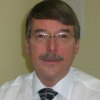 | Name: Richard Gee
Overview: Richard Gee has been a G.P. in Lower Gornal, on the edge of the Black Country, since 1972. During the 1980s, a diabetes consultant from Wordsley Hospital helped his practice, and other training practices in the area, to set up mini-clinics and make links with a Diabetes Resource Centre at the hospital. In Dr. Gee`s view, the Payment by Results system, introduced in 2004, encouraged hospitals to reverse the flow of patients from hospital to GP care - but in his area many patients have preferred to stay with their` GPs, supported by a strong diabetes community nursing team.
There is interview with another Black Country GP, from one generation earlier, Dr. Joe Needoff.
Hits=1 |
|
|
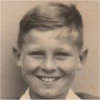 | Name: Ian Vokins
Overview: Ian Vokins was diagnosed shortly after leaving junior school and when he joined his secondary modern school, he was treated `like an alien` and fed dried apricots at every school dinner for 3 years! He was bullied throughout his school-days and left as soon as he could, aged 15. After that, life `seemed to open up` and he `started learning` while he worked as a technician in fields as diverse as atomic energy, cryogenics, orthotics, packaging, and space science. His work often took him abroad, and he says that diabetes hasn`t stopped him doing anything, apart from flying aeroplanes!
Hits=1 |
|
| 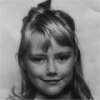 | Name: Clare
Overview: Clare was brought up in a remote Cornish hamlet. Although she developed Type 1 diabetes around the age of 5, she was not given insulin until about 4 years later and was instead kept on a near-starvation diet. She rebelled for many years and only began to take care of herself after she was registered blind in 1984. She went on to gain a second BA, MA and PhD and is now a university research fellow. She has been helped by coming to regard her lack of sight as `an issue around social equality as opposed to a medical issue`.
Hits=1 |
|
|
 | Name: Simon Lawson
Overview: Simon Lawson`s father was 65 when he was born and his mother 44, and both died while he was in his teens. His unhappiness affected his public school education and he failed to get a place at Cambridge. Instead he worked at Sotheby`s in London and it was only after he married in 1971 that he obtained a degree and a doctorate – leading to his present work as an Oxford University librarian. He has warm memories of being treated by two eminent consultants – RD Lawrence and John Nabarro – and has always enjoyed knowing as much as possible about diabetes.
Hits=1 |
|
| 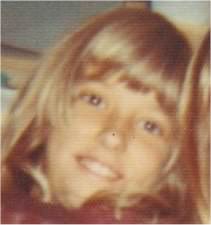 | Name: Rachel
Overview: In 1996, Rachel volunteered to work on a diabetes helpline, because she felt she`d learnt so much about diabetes from her family. Her older brother, Tom, and younger sister, Anna, were both diagnosed in their teens. Her parents were less traumatised by the second diagnosis and Rachel wonders if this explains the different ways in which her siblings have managed their diabetes. She has also observed how her brother has handled his own son`s diabetes; how a close friend coped with her child`s diagnosis; and how her mother-in-law struggled with Type 2 diabetes in her later years.
Hits=1 |
|
|
 | Name: Greg
Overview: Greg was brought up in Chelsea, attended art college and got a job at the British Museum, where he met Harriet, who`d had diabetes since she was twelve. They married in 1978 and had two children, Dan and Grace. Harriet managed her diabetes well and Greg was not greatly involved, except during her pregnancies. He felt a greater weight of responsibility when Grace was diagnosed - first with diabetes, aged nine in 1999, then with epilepsy, aged ten. He says that he sleeps on a knife-edge: `You listen for every sound that`s happening in the night`.
There is also an interview with Greg`s wife, Harriet.
Hits=1 |
|
| 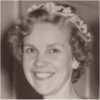 | Name: Olive
Overview: Olive married Gordon in 1956 and the following year he was diagnosed with Type 1 diabetes. He received good treatment at Kings College Hospital in London from R.D. Lawrence, who founded the British Diabetic Association, but with some younger doctors, he felt he was `imparting more information to them than they were giving back to him.` Gordon had several hypos and their daughter said she hated hearing him groan in the night, but Olive thinks that her children became more caring people as a result of their father`s diabetes and that the whole family benefited from having a healthy diet.
Hits=1 |
|
|
 | Name: Pam Dyson
Overview: Pam Dyson has been involved with the nutritional management of diabetes and obesity for 25 years. She began her working life with the Medical Research Council at the Dunn Nutrition Unit in Cambridge and since then has practised as a community dietician, diabetes specialist dietician for both in and out-patients and has been closely involved with clinical research. Since 2004, she has been employed by Oxford University as a diabetes research dietician. Her main interests are in the delivery of diabetes dietary education, behavioural aspects of lifestyle change and weight management.
Hits=1 |
|
| 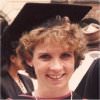 | Name: Veronica Wilkie
Overview: When Veronica Wilkie became a GP in Droitwich Spa in 1992, she was expected to specialise in gynaecology. Instead she chose to specialise in diabetes - `the best decision I made`. She eventually set up courses for GPs and practice nurses to gain a Certificate in Diabetes Care. Now her practice no longer needs to run a diabetes clinic – because patients can choose to see any one of four doctors and three nurses with the Certificate in Diabetes Care, at a time to suit them. She is also a Senior Clinical Teaching Fellow at the University of Warwick Medical School.
Hits=1 |
|
|
 | Name: Margaret Elliott
Overview: Margaret Elliott`s newly-qualified local doctor diagnosed diabetes as soon as he walked through her front door - from the smell of acetone. Her family was poor but managed to pay for some medical care through a thrift club. Her parents did her injections for her and her husband did them after she married at 20. She was advised not to have children, but had 3 normal births and one caesarean. She attributes her good health to her husband`s care and a very strict diet. She has smoked 6 or 7 cigarettes a day since she was 14.
Hits=1 |
|
|  | Name: Emma
Overview: Emma`s mother, Bena, was diagnosed with diabetes in Uganda in 1965 and came to England when her family was expelled by Idi Amin. She married an Englishman, Terry, and had two children – Emma and her younger sister. When Terry was at work, Emma and her sister had to cope from an early age with their mother becoming unconscious. Her sister has now married and left home, but Emma still lives with her parents and was often phoned at work when her mother passed out – until her mother attended a DAFNE course and gained better control of her diabetes.
There are also interviews with Emma`s mother, Bena, and her father, Terry.
Hits=1 |
|
|
 | Name: Jenny Shaw
Overview: Jenny Shaw began specialising in diabetes when she worked as a staff nurse at the Radcliffe Hospital in Oxford from 1986 to 1988. She has worked in Oxford ever since, first as a diabetes specialist nurse from 1988 to 1998, then as a research nurse for the past ten years. In recent years, she has been involved in studies concerning the development of new treatments for people with type 2 diabetes. She is interested in the diversity of patients` experiences: `it`s a challenge how to meet that with each patient, and adapt…to that individual, and listen to what they`re saying`.
Hits=1 |
|
|
| Search returned 54 matches |